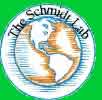







Web Links
Nitrogen uptake during snowmelt by the
snow buttercup, Ranunculus adoneus
R.B. Mullen, S.K. Schmidt, and C.H.
Jaeger III
Arctic and Alpine Research (1998) Vol. 30, No. 2: 121-125
 |
|||||||||||
 |
 |
 |
 |
 |
 |
 |
|||||
|
Web Links |
Nitrogen uptake during snowmelt by the
snow buttercup, Ranunculus adoneus
|
||||||||||
|
R.B. Mullen, S.K. Schmidt, and C.H.
Jaeger III
|
|||||||||||
|
|
|||||||||||
| Seasonal patterns of nitrogen (N) uptake were measured to assess the ability of the alpine herb Ranunculus adoneus to utilize the flush of N during snowmelt in an alpine tundra ecosystem. Development of mycorrhizal and dark septate fungi were also monitored within the roots of this snowbed plant in order to determine the role of these fungi in N acquisition. In addition, soil temperature, moisture, and inorganic N levels were measured to determine possible influences of edaphic factors on plant N uptake. In contrast to P uptake, which occurs late in the growing season and corresponds with arbuscular mycorrhizal (AM) development, N uptake occurred very early in the growing season before new roots and active AM fungal structures were formed. Soils at this time were cold and wet and NH4+ was the predominant form of inorganic nitrogen. Our data indicate that R. adoneus is able to take advantage of the early season flush of N by utilizing the previous year's root system which is heavily infected with a dark septate fungus. Given the high density of R. adoneus plants (135 plants per m2) in this snowbed system, they are a significant sink (ca. 0.5 g N per m2) for nitrogen released from within or beneath the alpine snowpack. | |||||||||||
Arctic and Alpine Research (1998) Vol. 30, No. 2: 121-125 |
|||||||||||